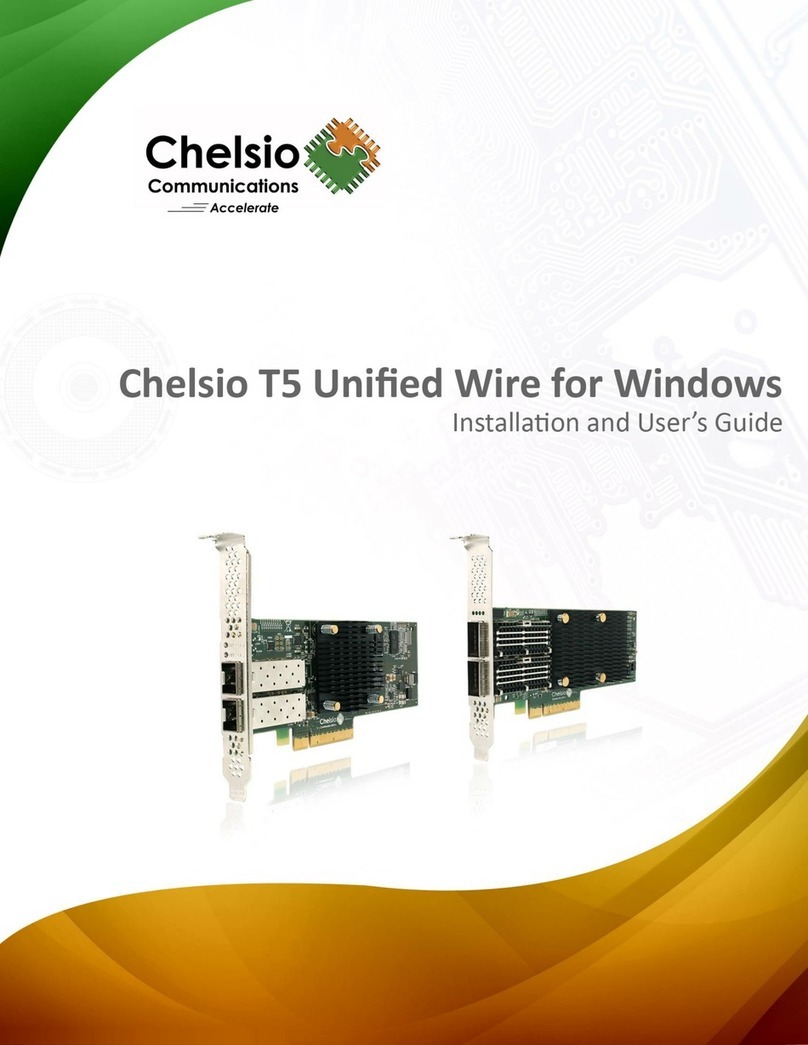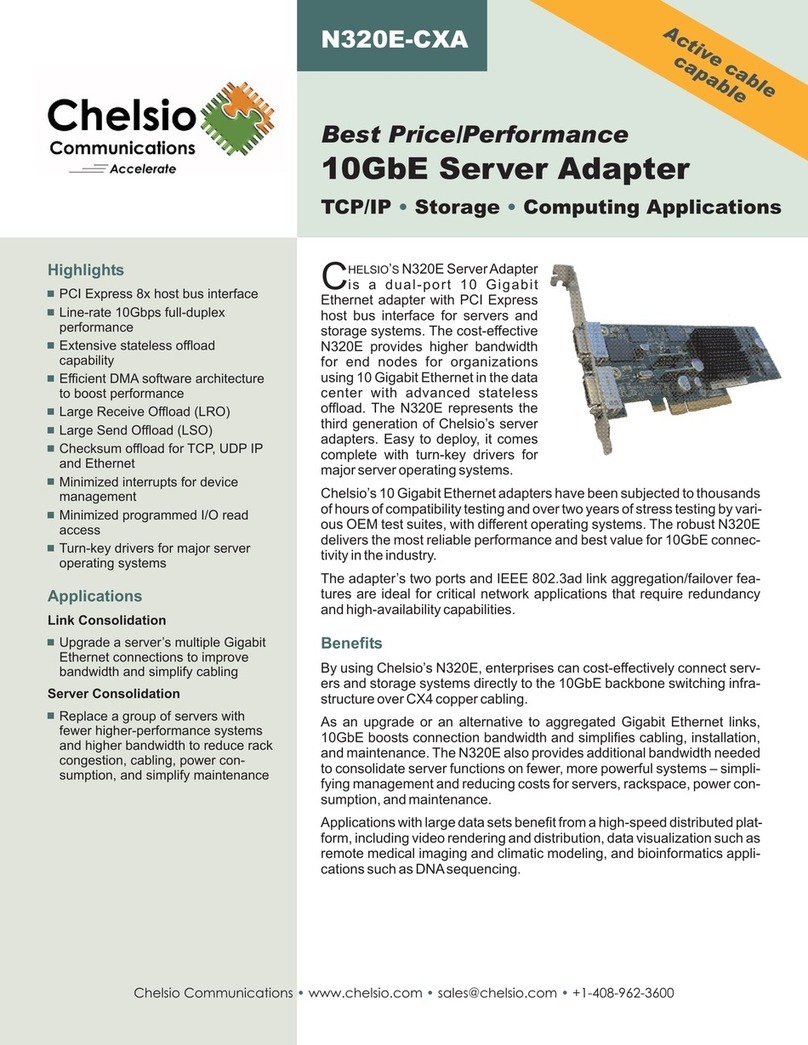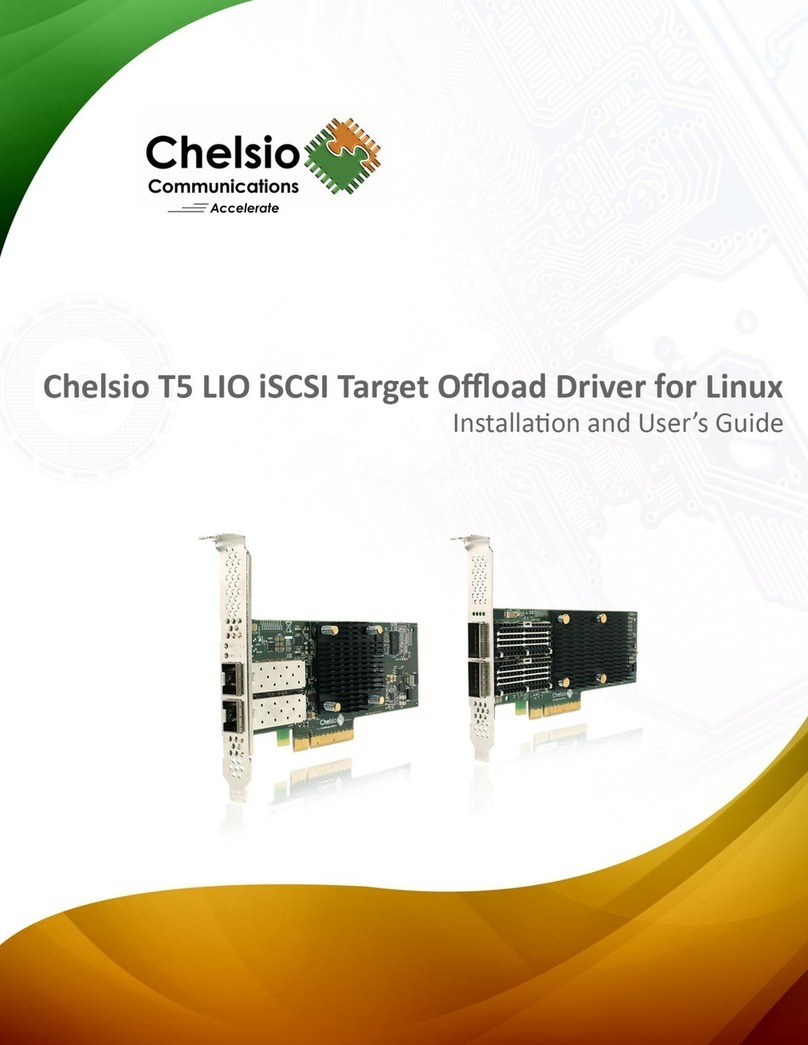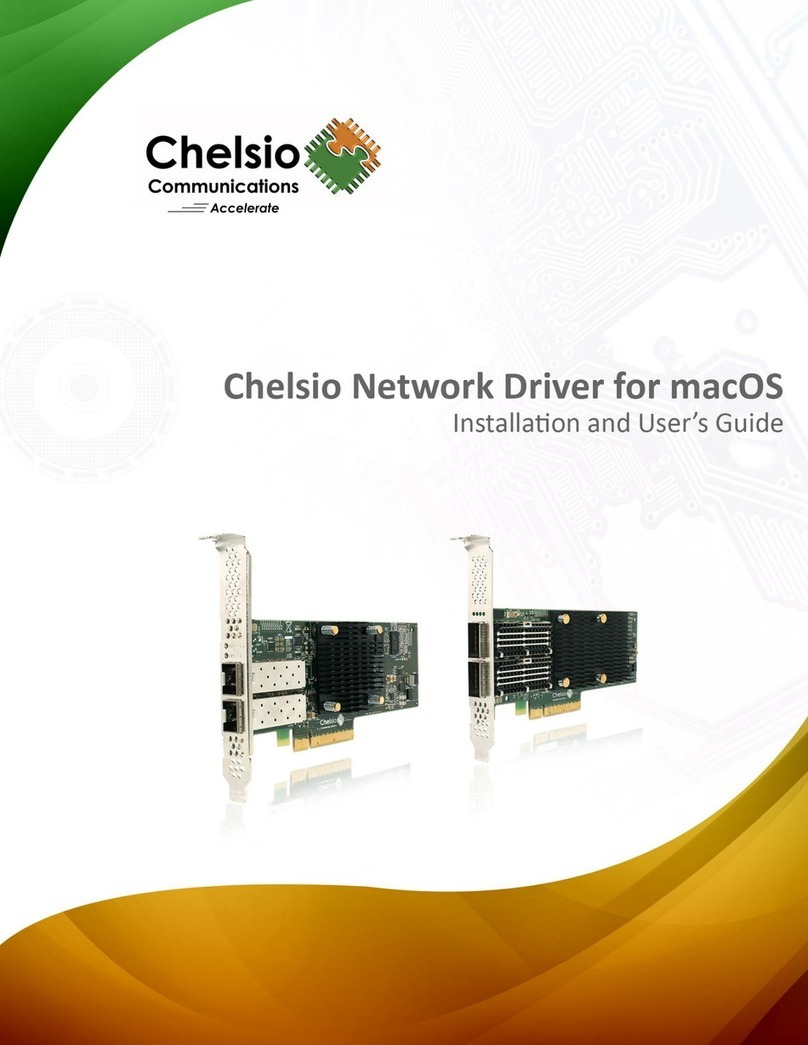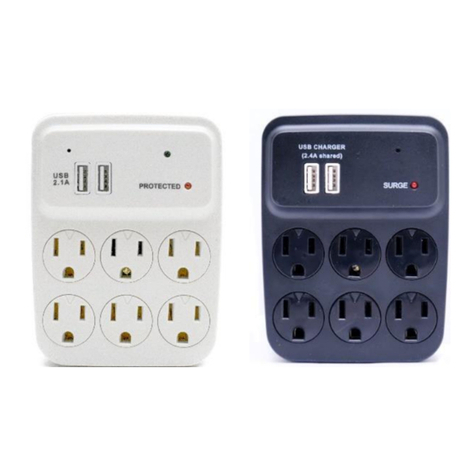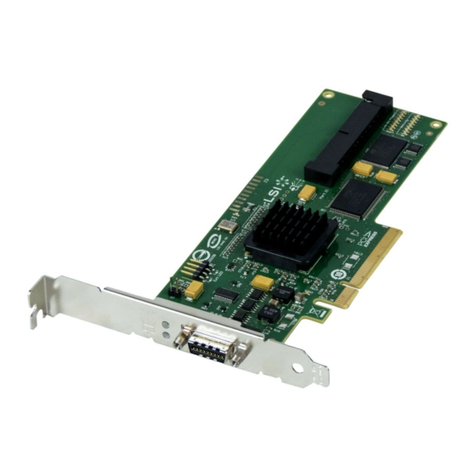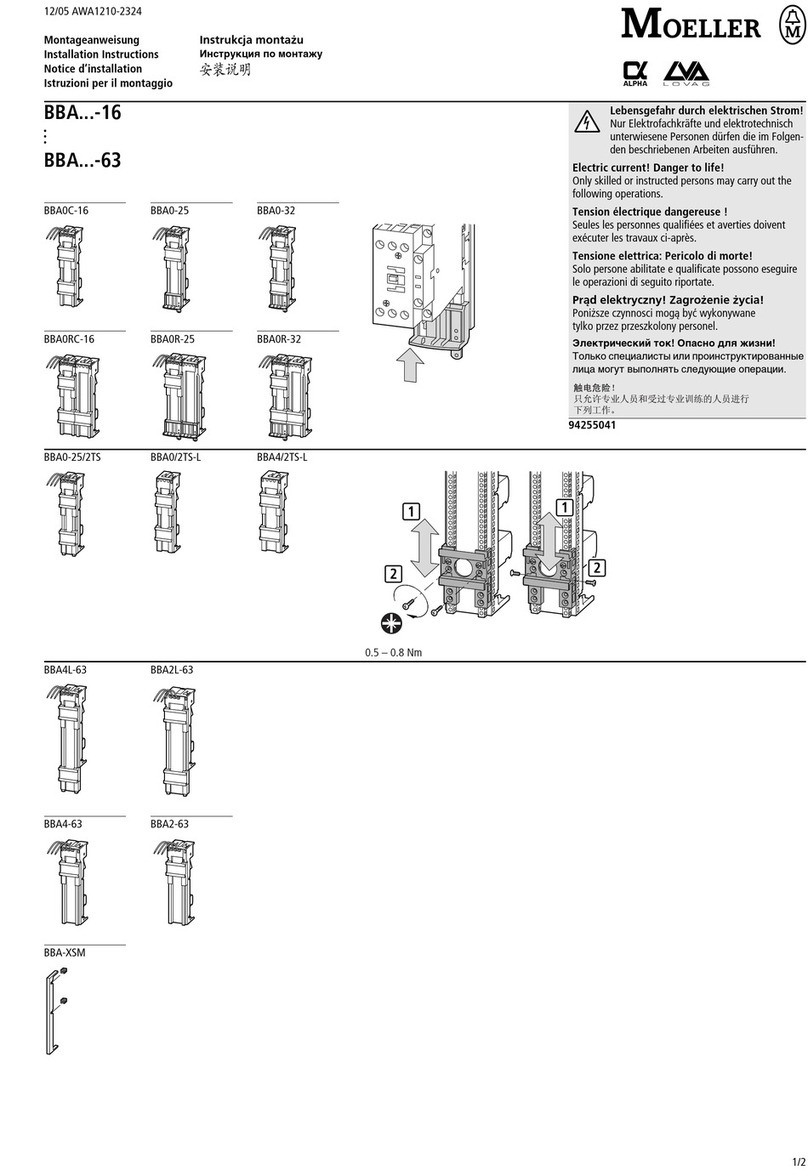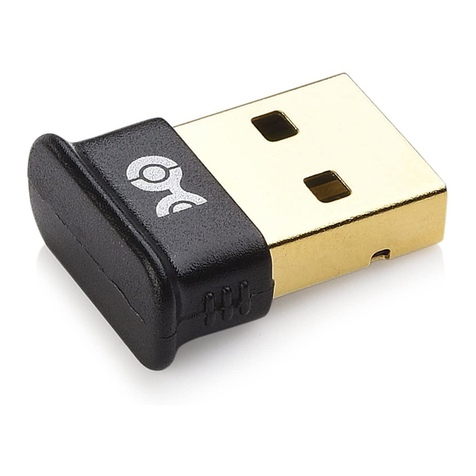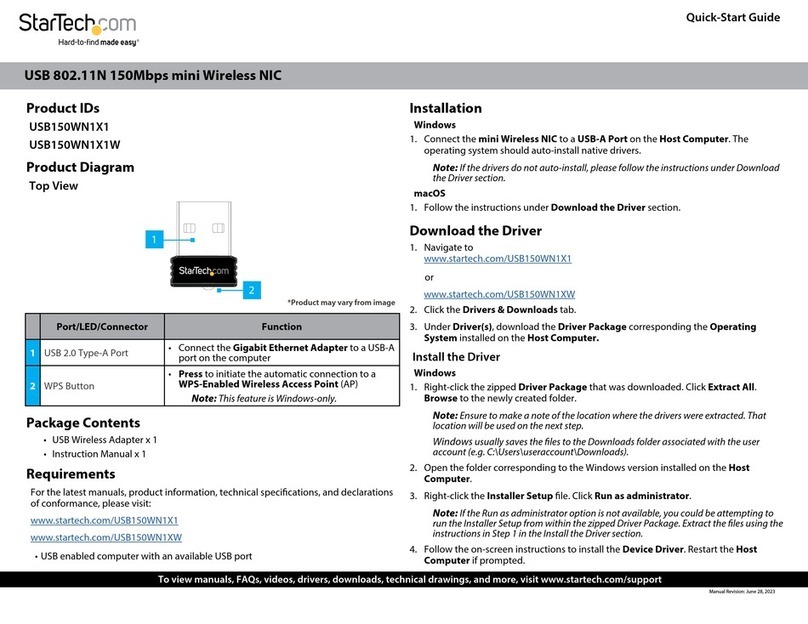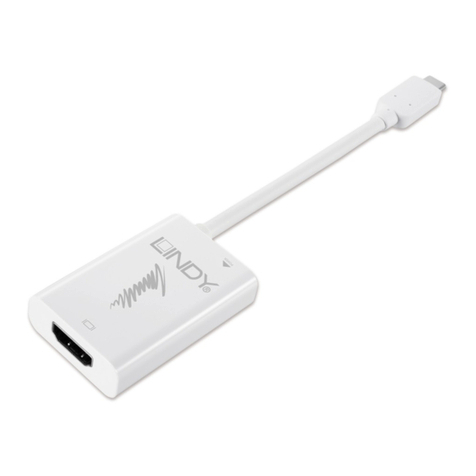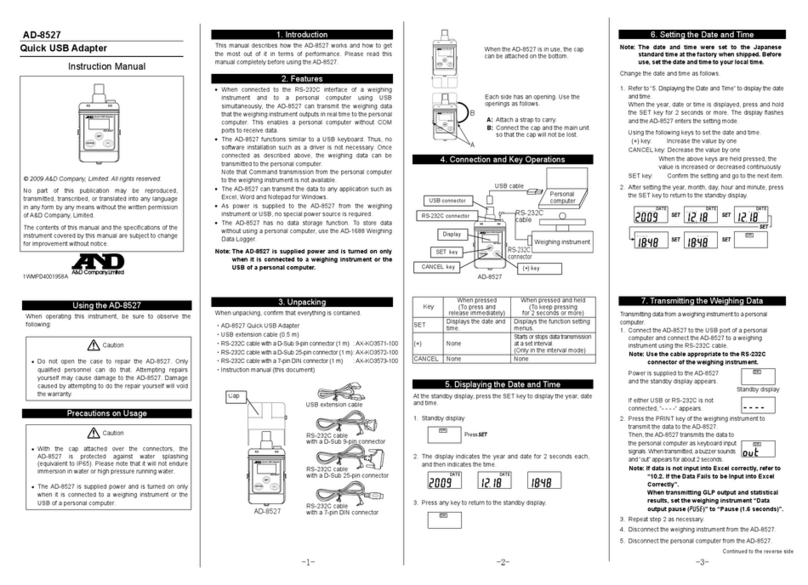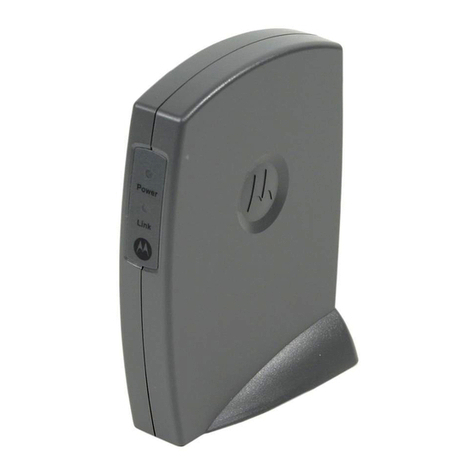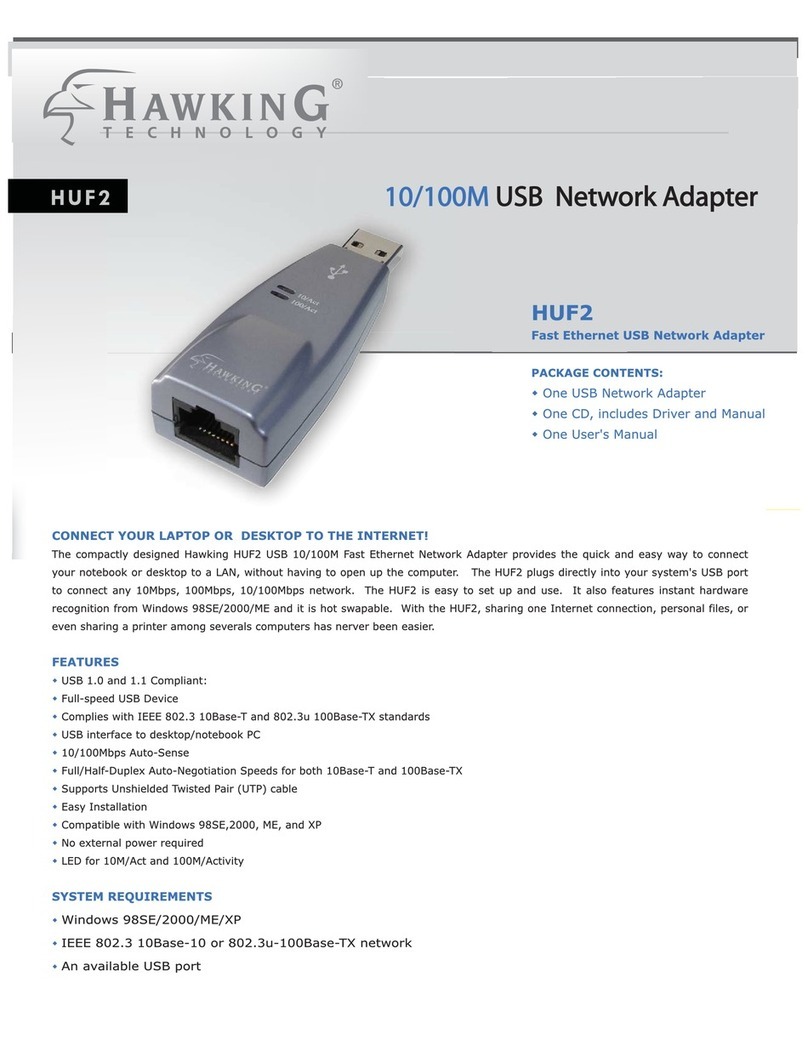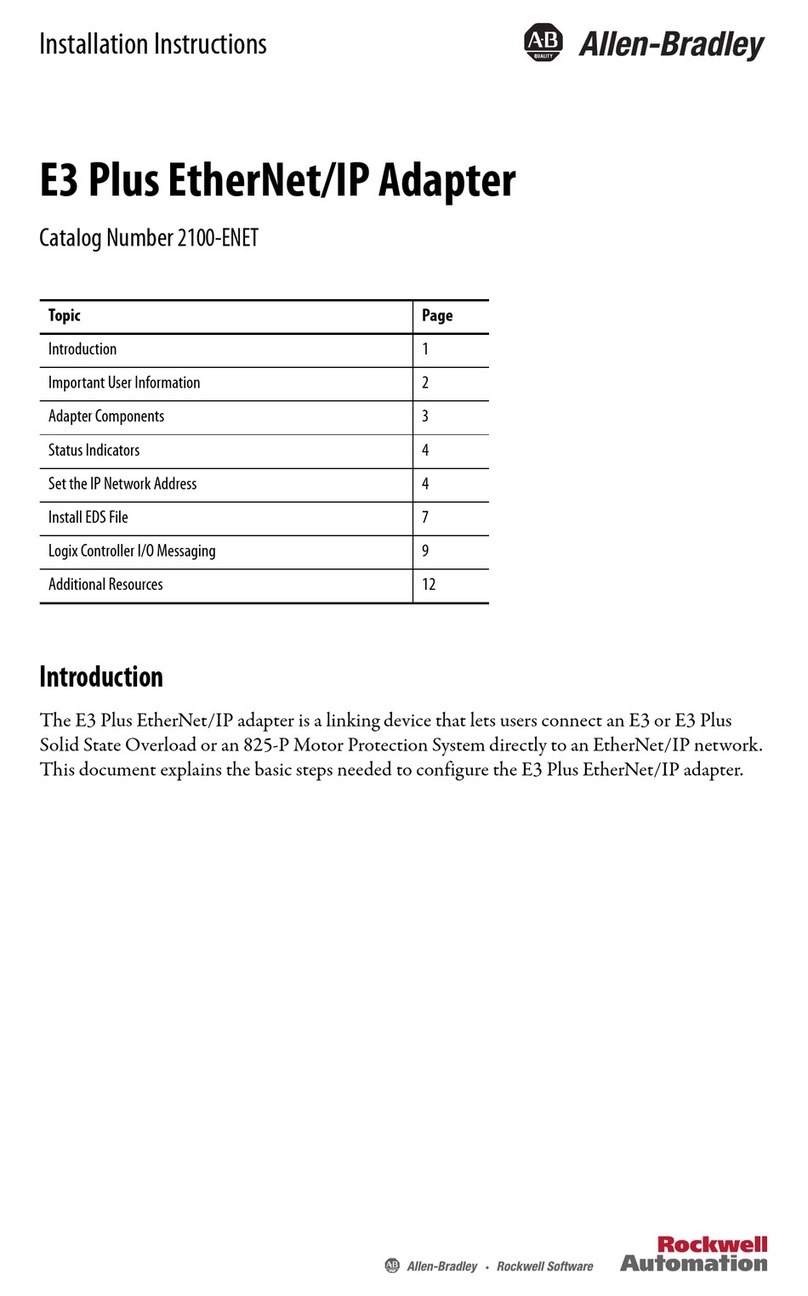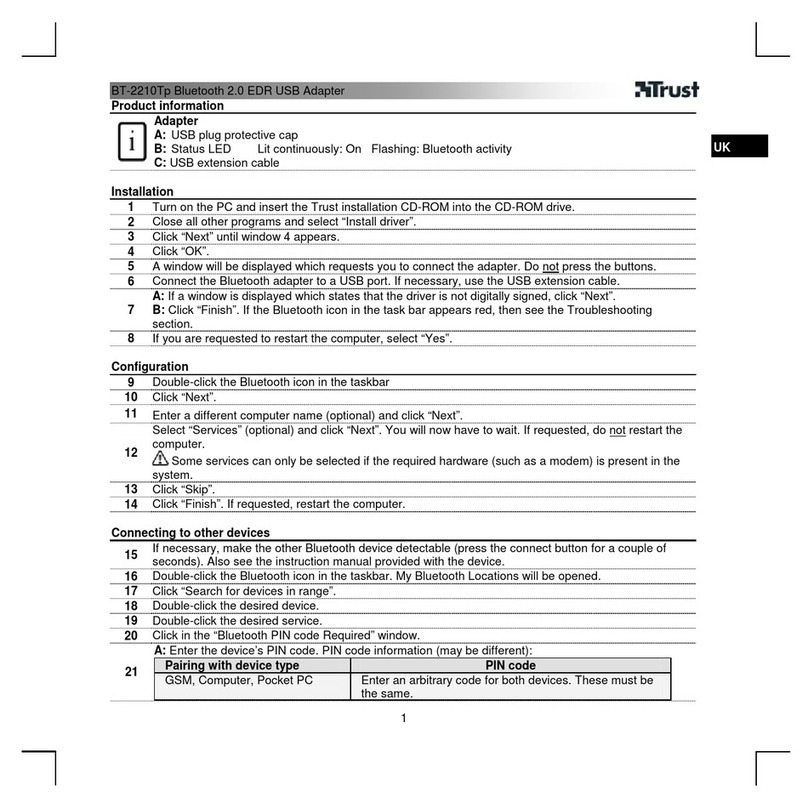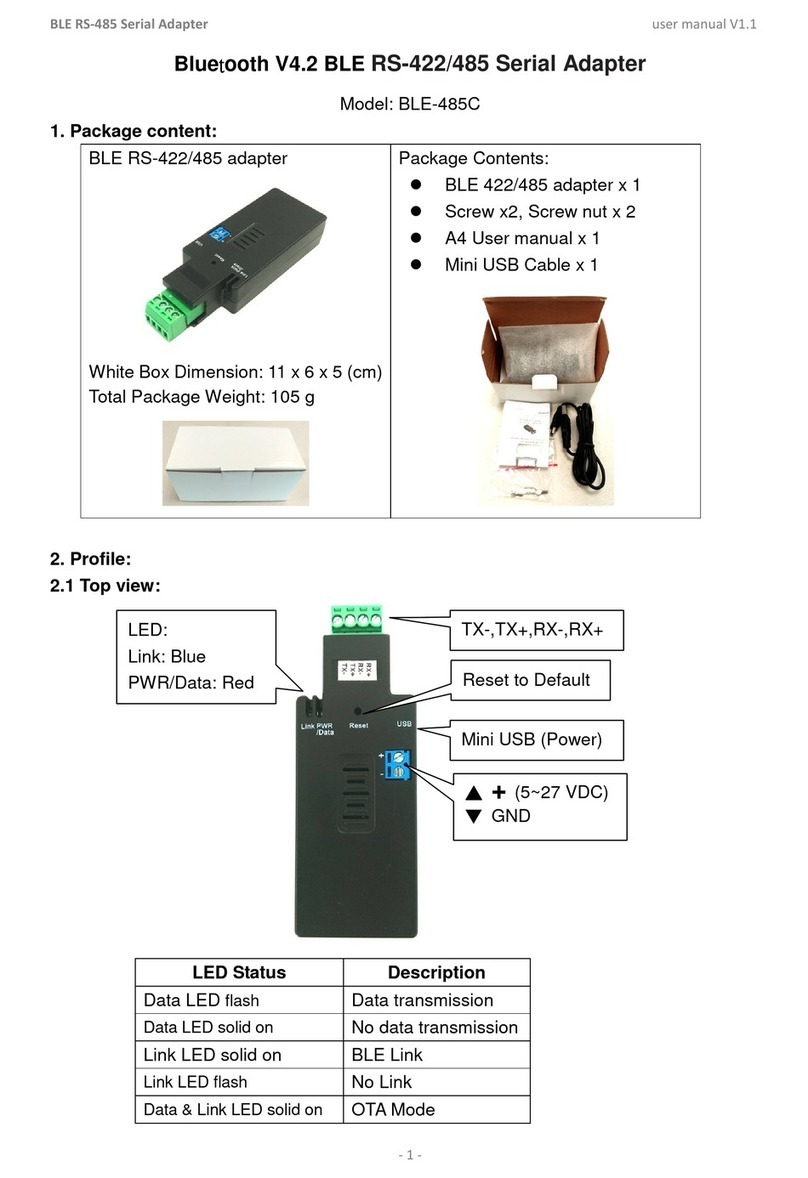Chelsio T5/T4 Unified Wire for Linux vi
1.1. Features 100
1.2. Hardware Requirements 101
1.3. Software Requirements 102
2. Software/Driver Loading 104
2.1. Latest iSCSI Software Stack Driver Software 104
3. Software/Driver Unloading 106
4. Software/Driver Configuration and Fine-tuning 107
4.1. Command Line Tools 107
4.2. iSCSI Configuration File 107
4.3. A Quick Start Guide for Target 108
4.4. The iSCSI Configuration File 110
4.5. Challenge-Handshake Authenticate Protocol (CHAP) 121
4.6. Target Access Control List (ACL) Configuration 123
4.7. Target Storage Device Configuration 125
4.8. Target Redirection Support 127
4.9. The command line interface tools “iscsictl” & “chisns” 128
4.10. Rules of Target Reload (i.e. “on the fly” changes) 133
4.11. System Wide Parameters 135
4.12. Performance Tuning 136
VIII. ISCSI PDU OFFLOAD INITIATOR 137
1. Introduction 138
1.1. Hardware Requirements 138
1.2. Software Requirements 139
2. Software/Driver Loading 140
3. Software/Driver Unloading 141
4. Software/Driver Configuration and Fine-tuning 142
4.1. Accelerating open-iSCSI Initiator 142
4.2. Auto login from cxgb4i initiator at OS bootup 144
IX. DATA CENTER BRIDGING (DCB) 146
1. Introduction 147
1.1. Hardware Requirements 147
1.2. Software Requirements 147
2. Software/Driver Loading 149
3. Software/Driver Unloading 150
4. Software/Driver Configuration and Fine-tuning 151
4.1. Configuring Cisco Nexus 5010 switch 151
4.2. Configuring the Brocade 8000 switch 154
5. Running NIC & iSCSI Traffic together with DCBx 156

